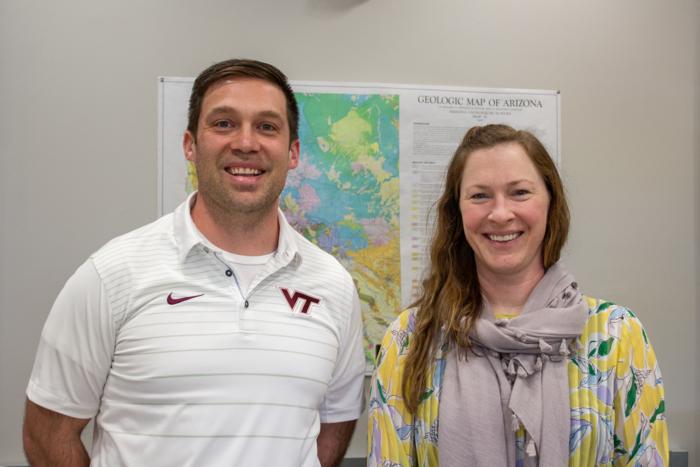Researchers image live drug response and resistant ‘pockets’ in pancreatic cancer
MEDIA RELEASE Credit: Max Nobis (VIB-KU Leuven Center for Cancer Biology) MEDIA RELEASE Researchers image live drug response and resistant ‘pockets’ in pancreatic cancer Pancreatic cancer drug response and resistance has been uncovered in unprecedented detail, thanks to a research tool developed at the Garvan Institute. Live microscopy footage of a key cancer driver molecule […]

MEDIA RELEASE

Credit: Max Nobis (VIB-KU Leuven Center for Cancer Biology)
MEDIA RELEASE
Researchers image live drug response and resistant ‘pockets’ in pancreatic cancer
Pancreatic cancer drug response and resistance has been uncovered in unprecedented detail, thanks to a research tool developed at the Garvan Institute.
Live microscopy footage of a key cancer driver molecule that is often overly active in pancreatic cancer could be used to reveal new paths to tackling drug resistance with combination therapies.
The team at the Garvan Institute of Medical Research found that the molecule AKT, which causes cancer cells to multiply and spread, is activated in distinct parts of the tumour, including at the border of a spreading cancer and areas of low oxygen supply where AKT forms pockets of resistance to therapy.
The research was made possible through a ‘biosensor’ mouse model developed at Garvan that produces a fluorescent version of AKT and provides the first real-time view of a major cancer cell-signalling network within living tissues.
“The AKT pathway has been a target for therapy for decades but drugs targeting this pathway alone have thus far been largely ineffective in the clinic,” says Professor Paul Timpson, Head of the Invasion & Metastasis Lab, co-Lead of the Cancer Ecosystems Program at Garvan and co-senior author of the study.
“Thanks to our new imaging model, we can see a clear way forward for how combination approaches could reduce drug resistance, switch off AKT and help stop tumours from growing and spreading. This research could help significantly improve outcomes for patients with pancreatic cancer.”
The research was published in the journal Science Advances.
Zeroing in on pockets of drug resistance
Pancreatic cancer has a five-year survival of less than 11%, a rate which drops even further once the cancer has metastasised. Improvements in treatments for this aggressive cancer are therefore urgently needed.
One promising target for therapy is the AKT pathway – a key signalling pathway that in regular cells throughout the body maintains normal cell growth and metabolism. Many cancers, including approximately a quarter of pancreatic cancers, carry an altered version of this pathway that is overly active and fuels cancer growth and spread.
“Our biosensor mouse is the first tool capable of showing us exactly when and where AKT switches on or off in living tissues, providing us with an unprecedented view of its treatment response and resistance,” says Professor Timpson.
“Using intravital microscopy at the ACRF INCITe Centre to image our biosensor model, we blocked AKT activity using clinical treatments, but could see, in real time, that AKT remained switched on inside drug-resistant pockets, specifically in areas close to invasive borders or with low oxygen supply,” says co-senior author Dr Max Nobis, Head of the Intravital Imaging Expertise Center at the VIB-KU Leuven Center for Cancer Biology and visiting scientist at Garvan.
“We also saw that as cancer cells got closer to a blood vessel, AKT started to activate. This indicates that AKT not only drives cancer growth, but it also actively drives the early events of cancer spread to other sites around the body. For the first time, we’re able to see these events in a live pancreas.”
“Now that we can visualise pockets of treatment response and resistance, our next steps will be to investigate treatments co-targeting AKT in combination with drugs that open up blood vessels for improved drug delivery, while also breaking down known barriers such as dense fibrotic tissue that often surrounds pancreatic tumours. This could improve drug delivery and switch off AKT inside impenetrable pockets to help reduce drug resistance. Seeing such combination approaches in real-time inside a tumour will be crucial to improving treatments,” says Dr Nobis.
The researchers say their biosensor model will next be used to optimise new combination therapies with AKT pathway inhibitors for pancreatic cancer and other AKT-driven cancers.
“Our ability to see AKT in cancer cells is taking the guesswork out of the development of new therapies and has broad applications, with AKT contributing to many cancers, including breast and prostate cancers. Our model is a vital new tool in the era of co-targeting the tumour ecosystem in precision medicine, bringing us closer to improved treatment options for patients,” says Professor Timpson.
–ENDS–
This study was supported by the Cancer Ecosystem Program, a Len Ainsworth Fellowship, the Suttons family, St Vincent’s Clinic Foundation, the National Health and Medical Research Council, a Baxter Scholarship, the National Breast Cancer Foundation, Cancer Institute NSW, Cancer Council NSW and ACRF. The project was made possible by a grant from PanKind, The Australian Pancreatic Cancer Foundation.
Professor Paul Timpson is a Conjoint Professor at St Vincent’s Clinical School, Faculty of Medicine and Health, UNSW Sydney.
Journal
Science Advances
DOI
10.1126/sciadv.adf9063
Method of Research
Experimental study
Subject of Research
Animals
Article Title
Monitoring AKT activity and targeting in live tissue and disease contexts using a real-time Akt-FRET biosensor mouse.
Article Publication Date
26-Apr-2023
What's Your Reaction?

































